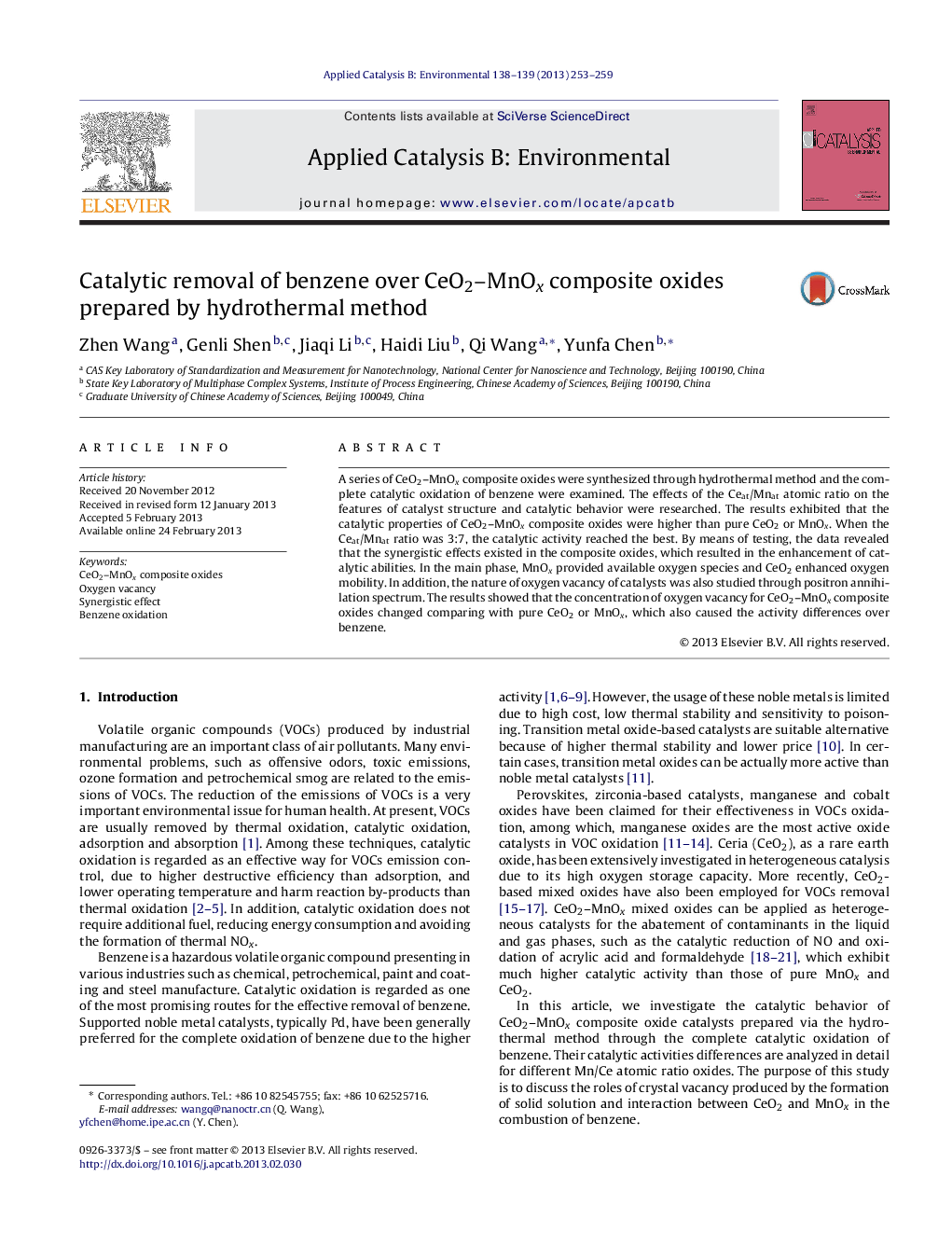| Article ID | Journal | Published Year | Pages | File Type |
|---|---|---|---|---|
| 46230 | Applied Catalysis B: Environmental | 2013 | 7 Pages |
A series of CeO2–MnOx composite oxides were synthesized through hydrothermal method and the complete catalytic oxidation of benzene were examined. The effects of the Ceat/Mnat atomic ratio on the features of catalyst structure and catalytic behavior were researched. The results exhibited that the catalytic properties of CeO2–MnOx composite oxides were higher than pure CeO2 or MnOx. When the Ceat/Mnat ratio was 3:7, the catalytic activity reached the best. By means of testing, the data revealed that the synergistic effects existed in the composite oxides, which resulted in the enhancement of catalytic abilities. In the main phase, MnOx provided available oxygen species and CeO2 enhanced oxygen mobility. In addition, the nature of oxygen vacancy of catalysts was also studied through positron annihilation spectrum. The results showed that the concentration of oxygen vacancy for CeO2–MnOx composite oxides changed comparing with pure CeO2 or MnOx, which also caused the activity differences over benzene.
Graphical abstractThe benzene catalytic oxidation process for CexMn1−x composite oxides was carried out according to three paths. The first path (I), benzene that had been adsorbed on CexMn1−x oxides is oxidized by the release of oxygen from CeO2 phase; the second path (II), benzene is oxidized by the release of oxygen from CexMn1−x oxides; the third path (III), benzene is oxidized by the active oxygen species from gas oxygen molecules. Meanwhile, the synergistic effect between CeO2 and Mn2O3 can enhance the migration of oxygen vacancy to improve the catalytic activity; therefore, the synergistic effect and oxygen vacancy play an important part in the whole process.Figure optionsDownload full-size imageDownload as PowerPoint slideHighlights► A series of CexMn1−x catalysts are synthesized through hydrothermal process. ► Their catalytic properties over benzene oxidation were studied. ► The difference was explained in view of synergistic effect and oxygen vacancy.
